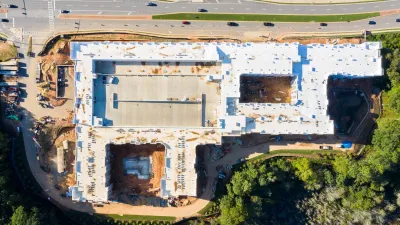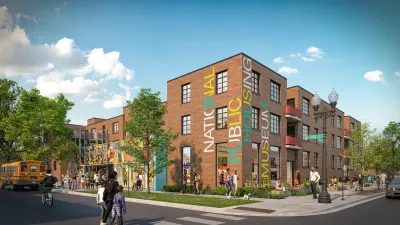Like so many drug and crime infested neighborhoods in cities everywhere, ideas abound for fixing the Jane and Fitch neighborhood in Toronto. But will any of them work?
"Over the past three decades, Jane and Finch has remained a crack in Toronto's wall that has, again and again, been covered up with wallpaper.
It has been decorated with grants, surveillance cameras, task forces and studies. But as politicians furrowed their brows at the somehow-surprising findings of each commissioned report, all along, residents have been calling for a new foundation.
Jim Watson politely disagrees with critics who say the provincial government hasn't committed itself financially to fixing Jane and Finch."
"But the decades-old problems persist. Unemployment. Low income. Under-education. Health problems. Poor housing. Isolation."
"Watson pins the blame, like so many others before him, on the 1970s urban planning fiasco that is Jane and Finch.
Dozens of low-income high rises erected around the intersection would preface overcrowding in schools and increasing juvenile delinquency in the 1970s, the presence of handguns in the 1980s and increasing poverty through the 1990s.
Kids would fall through the cracks that critics charge have never been cracks at all, but huge gaps left by negligent politicians. Some would fall behind in school; others would drop out, deal drugs, rob stores, carry guns. Childhood friends would end up behind bars, in front of bullets and in burial plots.
"We're very much of the opinion that you have to have a mixed development in neighbourhoods so that you know individuals are interacting with people from all economic strata," Watson says. "To simply have all of the low-income people put into an affordable housing complex is not good planning."
But being of an opinion and fixing problems erected by long-gone policy makers are entirely different things."
FULL STORY: Lots of fixes, no solutions

Planetizen Federal Action Tracker
A weekly monitor of how Trump’s orders and actions are impacting planners and planning in America.

Restaurant Patios Were a Pandemic Win — Why Were They so Hard to Keep?
Social distancing requirements and changes in travel patterns prompted cities to pilot new uses for street and sidewalk space. Then it got complicated.

Map: Where Senate Republicans Want to Sell Your Public Lands
For public land advocates, the Senate Republicans’ proposal to sell millions of acres of public land in the West is “the biggest fight of their careers.”

Maui's Vacation Rental Debate Turns Ugly
Verbal attacks, misinformation campaigns and fistfights plague a high-stakes debate to convert thousands of vacation rentals into long-term housing.

San Francisco Suspends Traffic Calming Amidst Record Deaths
Citing “a challenging fiscal landscape,” the city will cease the program on the heels of 42 traffic deaths, including 24 pedestrians.

California Homeless Arrests, Citations Spike After Ruling
An investigation reveals that anti-homeless actions increased up to 500% after Grants Pass v. Johnson — even in cities claiming no policy change.
Urban Design for Planners 1: Software Tools
This six-course series explores essential urban design concepts using open source software and equips planners with the tools they need to participate fully in the urban design process.
Planning for Universal Design
Learn the tools for implementing Universal Design in planning regulations.
Heyer Gruel & Associates PA
JM Goldson LLC
Custer County Colorado
City of Camden Redevelopment Agency
City of Astoria
Transportation Research & Education Center (TREC) at Portland State University
Camden Redevelopment Agency
City of Claremont
Municipality of Princeton (NJ)





























